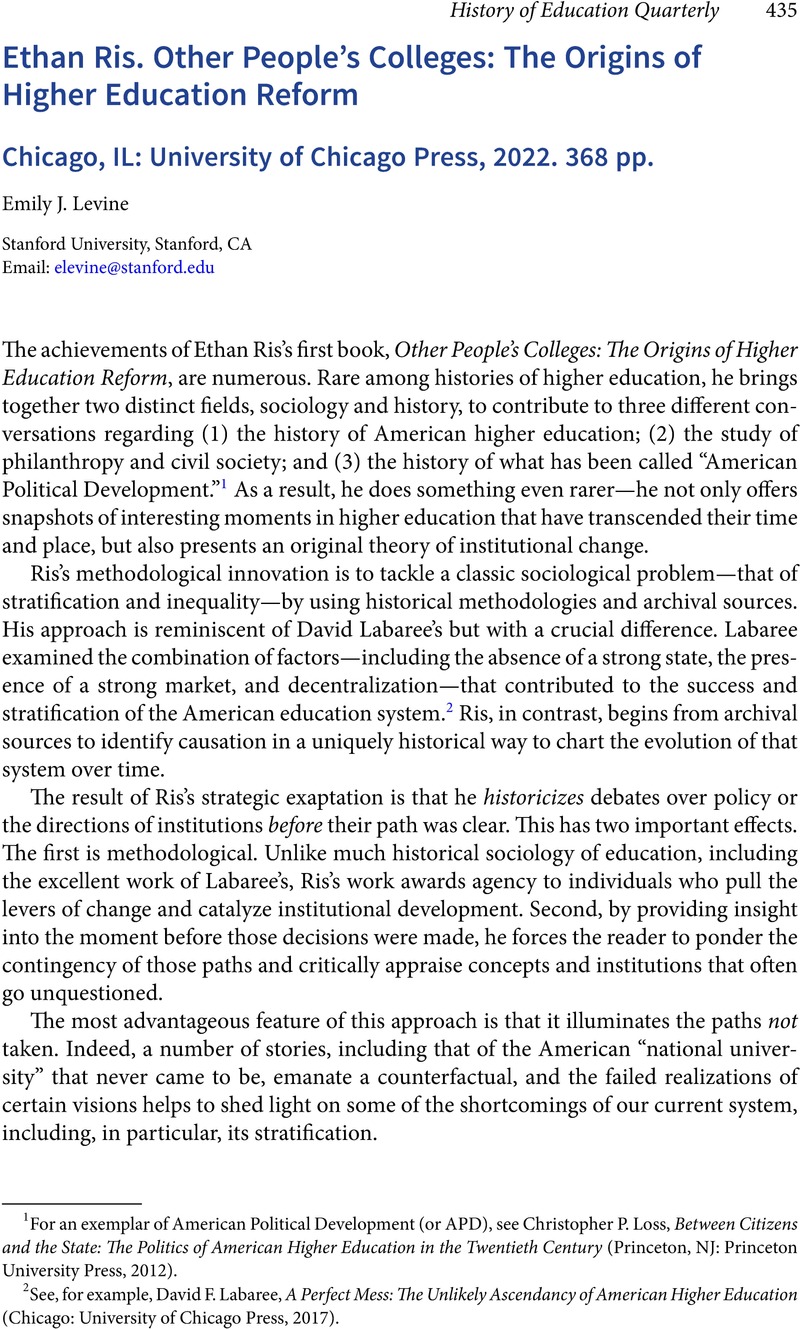No CrossRef data available.
Published online by Cambridge University Press: 01 August 2023

1 For an exemplar of American Political Development (or APD), see Loss, Christopher P., Between Citizens and the State: The Politics of American Higher Education in the Twentieth Century (Princeton, NJ: Princeton University Press, 2012)Google Scholar.
2 See, for example, Labaree, David F., A Perfect Mess: The Unlikely Ascendancy of American Higher Education (Chicago: University of Chicago Press, 2017)CrossRefGoogle Scholar.
3 See, for example, John Frank, David and Meyer, John W., The University and the Global Knowledge Society (Princeton, NJ: Princeton University Press, 2020)Google Scholar.
4 Ben-David, Joseph, “Science and the University System,” in “The Notion of Modern Educational Sociology / Der Begriff der Modernen Erziehungssoziologie / La notioncontemporaine de sociologie de l’education,” special issue, International Review of Education / Internationale Zeitschrift fürErziehungswissenschaft / Revue Internationale de l’Education 18, no. 1 (1972): 44–60, here 49.Google Scholar
5 See, for example, Rose, Mike, Why School? Reclaiming Education for all of Us (New York: The New Press, 2014)Google Scholar.